Animals seen:
- Massive herds of wildebeest/gnu
- Almost as massive herds of zebra
- Fairly large groups of Cape Buffalo
- Scattered groupings of Thomson gazelle
- A dozen or so warthogs and their adorable pint sized piglets
- Two troops of baboons
- 11 hippopotamus (hippopotamuses?hippopotami?)
- 5 lions (one male)
- 3 elephants
- 2 cokes hartebeest
- One Grant gazelle hiding out in a group of Thomson
- One black faced vervet monkey chilling with a troop of baboons (he had bright blue testicles)
- One solitary sleeping black rhinoceros, at a great distance. Possibly a rock.
- Lots of guinea fowl
- Bands of Egyptian goose
It was a successful day; we’ve already seen more species of animals then I thought we would. I didn’t dare to hope that we’d get so lucky, but Paul seemed quite confident. He told us that the giraffe would be the only thing guaranteed not to be seen; they can’t make the climb over the rim of the crater down to its floor.
We began our day in the Park Bridge Resort with breakfast, chatting with a couple of Tanzanian young men about our age who turned out to be wildlife counters heading out to a job in Manyara. One of them pointed out a troop of baboons calmly stuffing grass into their mouths and grooming right in the resort’s driveway.
The car ride to the crater began. We stopped briefly in Karatu, the largest/closest village to the crater’s main entrance and therefore a prime tourist convenience stop. We met John, the founder of Endallah Cultural tours, and some of his staff, including the Belgian man, Steven, who had been our primary email writing point of contact for us before we left. He was on holiday with his wife and kids, showing them where he worked. John introduced us to a friend of his who was part of the local government, and we all sat and had coffee while we waited for Paul and our new cook, Nicholas, who had joined us at the Park Bridge, went and got the tent supplies.
We won’t use the friend’s name for privacy purposes. He was a member of Tanzania’s opposition, Chadema party, vs Joseph Mukafuli (I’m sure I’m spelling that wrong, but I have no Internet to check at the moment) the president’s ruling party of CCM. We asked the friend more about what the differences between what the two parties were – things like unions and striking (CCM will have their leaders secretly murdered) and education and schools (Chadema wants to build them). Chadema had never had a president before – when Tanzania became a “democracy” in the early 1960s there was only a single party, and Chadema split off the ruling group about 20 years ago. However, said the friend, we are growing – we have 100 out of the 250 parliament seats now. We have lots of local leadership in the small towns around the country. We think that we won the presidential vote last year, but CCM controls the election oversight board and declared Mukafuli the winner before the votes were even half counted. John sat and quietly sipped his coffee, sometimes nodding – especially about the schools, which he founded Endallah to help fund. It seemed to us, Christine and I said, that Chadema was like the Democratic party of the USA, and CCM was the Republicans. There was general agreement all around. Both men asked us how Donald Trump had won the election, surprising everyone. I feel like this will be a general theme of the trip.
Paul and Nicholas rejoined us, and we headed into Ngorogoro, stopping briefly at the visitor’s center to have 1GB SD cards for 20USD hawked to us, and for Paul to register his tourists and the size and weight of the truck. We climbed up a very steep hill – the rim around the 20km wide crater. The Masaai were resettled here after the government made the Serengeti a national park and forced them to leave, and we saw lots of them in their bright red and blue robes tending their cattle and watching us go past with solemn, inscrutable gazes.
The crater is 3.8 million years old, said Paul, and the animals come to it every year in the Great Migration. We immediately saw zebra – lots of zebra, grazing peacefully next to gnu/wildebeest. The gnu have sensitive noses, and the zebras have strong eyes – they instinctively work together in order to protect the entire herd from predators. These two species seemed pretty laid back around us; we’re just vaguely human-and-diesel smelling metal beasts, roaming around their plains, not hurting anyone. The zebras in particular would just wander away from us, and the gnu would toss their heads in a rather comical fashion and galumph away, sometimes sideways, while kicking up their heels.
We saw two elephants enjoying a mud bath, up to their legpits in muck and grabbing marsh grass off the edge. A secretary bird gazed at us with its raptor mouth open in a derpy fashion, tilting and cocking its head rapidly at various angles. I’d never seen one before, not even in zoos – their defining characteristic is the strange plumage of 6-10 blackish feathers stuck off the back of its head, like a mohawk, then jauntily running away on its storks like legs.
Suddenly, Paul stopped the car and grabbed his binoculars. “Over there.” he said quietly. “It is a black rhinoceros.” It took a few minutes, using a hyena which might have been a dead log to find a rhino which might have been a grey rock, about half a kilometer away. Apparently it is a very rare find; the rhinos are all but wiped out, and the Crater is one of the only places where we’d even have the slightest chance to see one. So while I might have seen one now in the wild, the shape I saw with a twitching ear might be all I get!
The Cape Buffalo were not nearly as dangerous looking as all the stories say they are. They looked like friendly docile cows with sort of Viking-style helmets of horn, and they chewed their cud and stared off into space. We certainly didn’t test that by getting out of the car, though. Paul told us that danger and disembowelment was only the first part – drones and high-powered binoculars were watching all the cars all the time, making sure no one strayed off the roads in their vehicles.
We had lunch near a lovely little pond with some hippopotamus grunting and splashing themselves on the other side. A few black kite eagles and masked weaver birds flew around, demanding food handouts and in the case of the huge eagles, sometimes taking instead of asking. Nicholas’s boxed lunches were very tasty – a leg of fried chicken, chappati bread, a banana, mango juice, and a container of noodles cooked in mayonnaise. The last one tasted pretty good despite sounding a bit weird. Other tourist trucks were all around us and the air was filled with sounds of chatting in many languages – I heard German, Spanish, and Italian at the very least.
After lunch we continued our roam around the crater, and the most interesting thing we saw was a sleeping lioness (the lions we saw earlier had also been sleeping – a common theme for lions in the day) except this one was next to a disemboweled, fly-covered half a zebra. The body was positioned next to the road in a ditch in such a way that we were looking right into the empty body cavity, with a pile of organs lying right next it. The upper half appeared to be completely gone.
As we got near the edge of the crater and the exit road up (the only paved road in the entire place, it seemed, for traction purposes) a troop of baboons crossed our path. Paul thought they might be trying to casually escape from something since they kept looking behind and and a large leading male kept shouting “OH! OH! OH!” A little black vervet monkey was the odd one out, running along next to them seemingly trying to look like he blended in, stuffing grass into his mouth and scratching his blue balls vigorously.
The climb out was beautiful, we passed through some very dense forest, almost jungle-like, before reaching the rim which on this side was a much more gradual slope down the the climb up it was this morning. The numbers of Masaai here were much greater than before, and we were waved at by a lot of smiling children. Christine wanted to offer them her chocolate bar she had gotten for lunch but not wanted, but she didn’t know if that was a good idea, or how Masaai felt about “outside” things.
When we reached Endulen Catholic Hospital, a little hostel and maternity focused hospital about 15km later, she put that question to the test. After tossing our bags in the room we went for a walk around the grounds, meeting some shy puppies who whimpered and whined and slinked away when touched (much to our disappointment – we’d been “looking but not touching” all day and we wanted to pet some adorable little dogs) but also two little Masaai girls who were fascinated by Christine’s sunglasses and camera.
A fashion photoshoot proceeded, with one girl at the lens and another at the lenses. We tried to use our “ke-Swahili” (ke meaning language) with them but Masaai speak the Maa language and besides the word “baba” meaning father, we were completely without communication. The girl with the camera learned fast though; in 10 minutes she was zooming, pressing the playback button to review her shots (she took about 50), and taking video. She showed them off with great joy to other older Masaai passing by who regarded them with amused disinterest, none stopped for longer than a second or two.
We found out later from Peter, the owner and impromptu Minister of Endulen that the words for “What is your name,” specifically when spoken to young girls, is “Garnali No” – he didn’t know anything besides that. I got the feeling that when we asked him right after leaving the girls, he went and asked one of the elder Masaai translators on our behalf, because he told us he didn’t know anything else. We thought about sending some of the best of the 50 photos to Peter to share with them, but then we found out that any Masaai here are just passing through on the way to market, and it is unlikely he would see them again.
After dinner with Paul and Nicholas, prepared by Peter (Nicholas’s only night off for the entire safari, from what I gather!) I tried to take a shower, only to find the nozzle didn’t work. I asked Paul what the situation for showers would be and he told me, “hot buckets of water tomorrow morning when we get up, 7am). Sounds good to me!
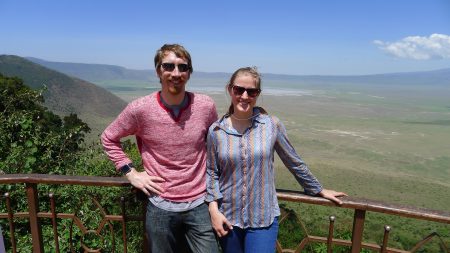
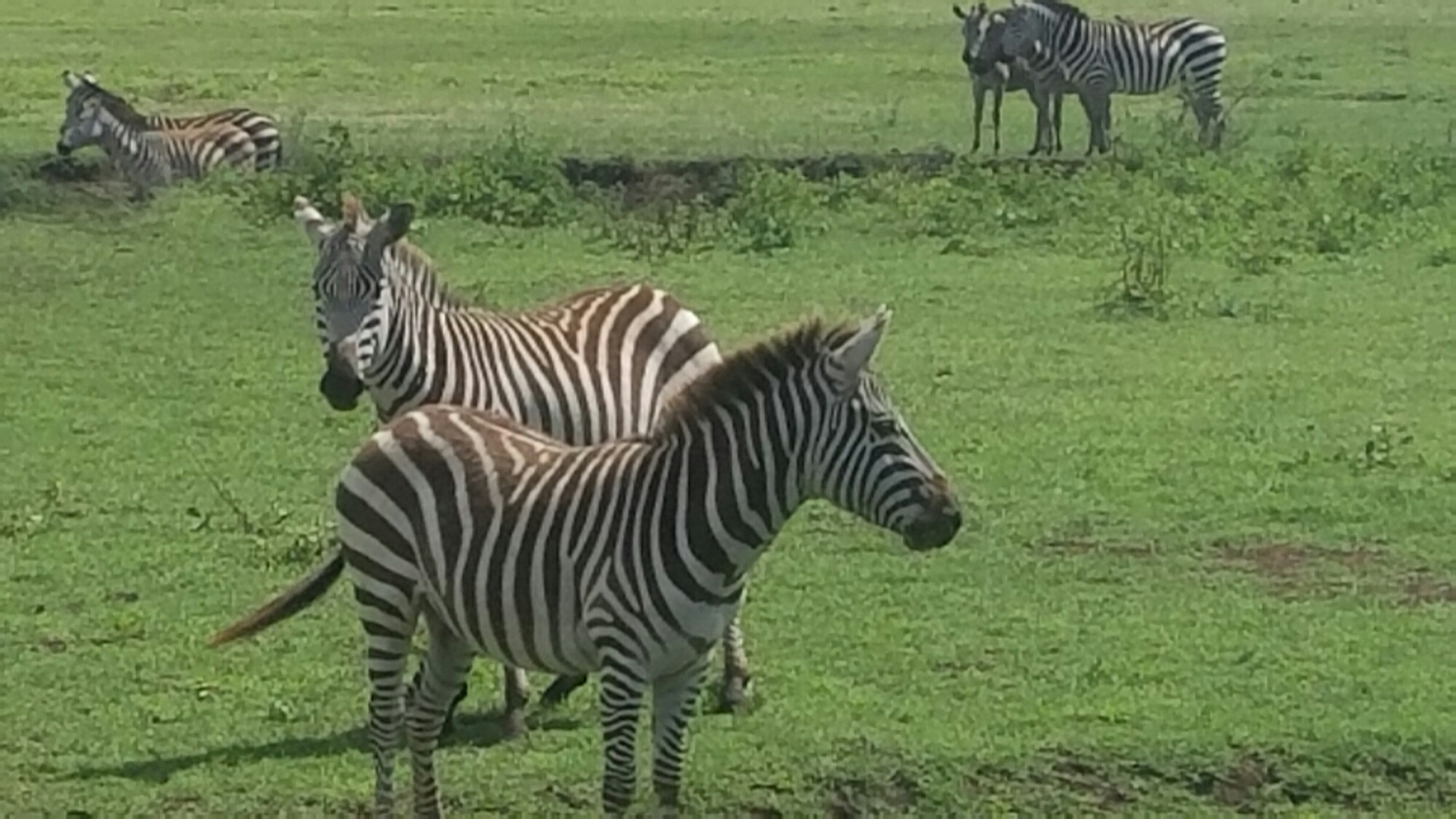
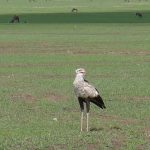
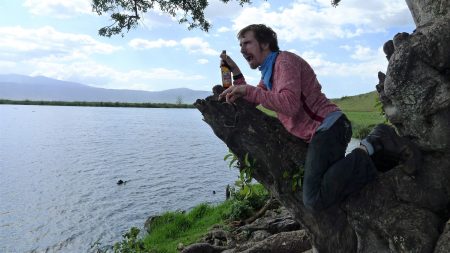
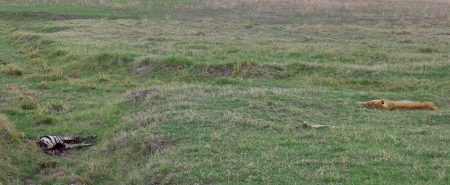
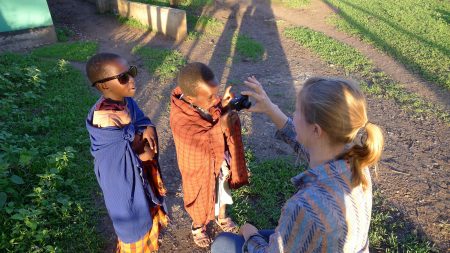
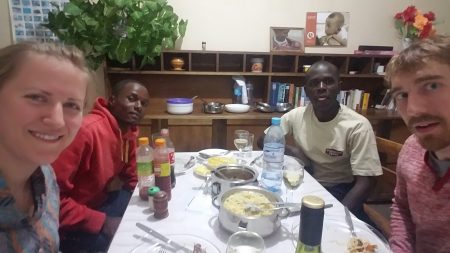


Don’t feel too bad. The puppies probably had worms in their tubes.